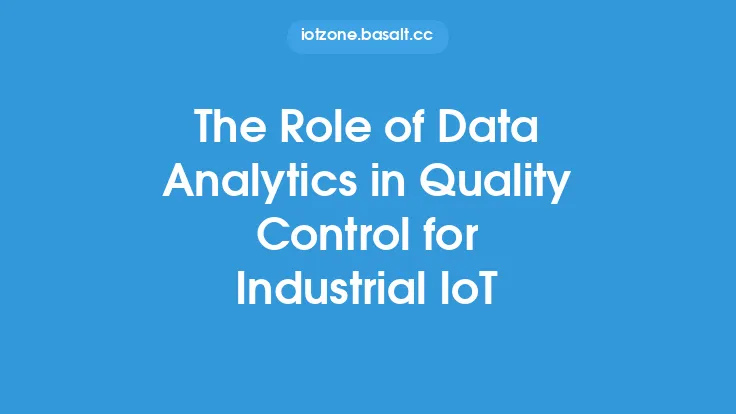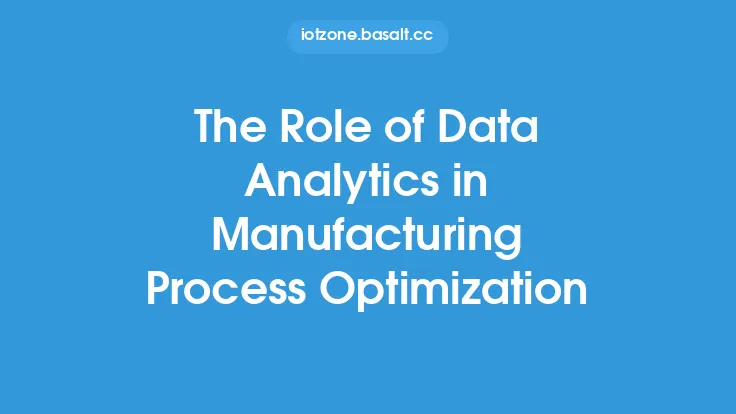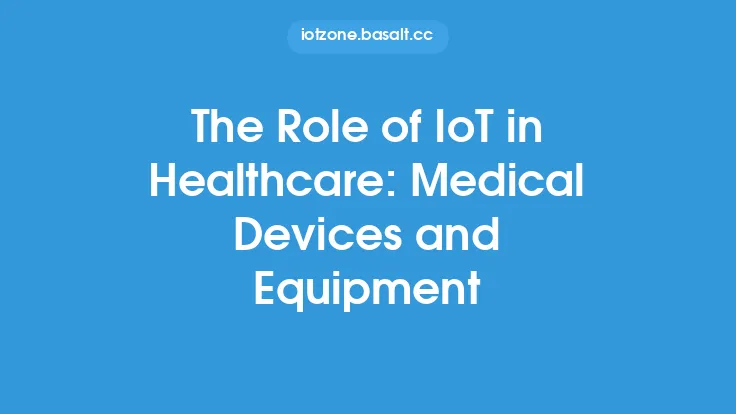Predictive analytics has become a crucial component in the realm of Industrial IoT, particularly in the context of predictive maintenance. The primary goal of predictive analytics is to analyze data and forecast potential equipment failures, allowing maintenance teams to take proactive measures to prevent downtime. By leveraging advanced statistical models, machine learning algorithms, and data mining techniques, predictive analytics can help identify patterns and anomalies in equipment behavior, enabling maintenance personnel to schedule maintenance activities during planned downtime or periods of low production.
Introduction to Predictive Analytics
Predictive analytics involves the use of historical data, real-time data, and other relevant information to forecast future events or behaviors. In the context of predictive maintenance, predictive analytics is used to analyze data from various sources, including sensors, machines, and other equipment, to identify potential failures or issues before they occur. This approach enables maintenance teams to move away from traditional reactive maintenance strategies, which often result in costly downtime and reduced productivity.
Key Components of Predictive Analytics
Several key components are involved in predictive analytics, including data collection, data processing, and model development. Data collection involves gathering relevant data from various sources, such as sensors, machines, and other equipment. This data can include temperature readings, vibration analysis, pressure measurements, and other parameters that are relevant to equipment performance. Data processing involves cleaning, transforming, and formatting the collected data into a suitable format for analysis. Model development involves using statistical models, machine learning algorithms, and data mining techniques to analyze the processed data and forecast potential equipment failures.
Predictive Analytics Techniques
Several predictive analytics techniques are used in predictive maintenance, including regression analysis, decision trees, random forests, and neural networks. Regression analysis involves using historical data to establish a relationship between equipment parameters and potential failures. Decision trees involve using a tree-like model to classify equipment behavior and predict potential failures. Random forests involve using an ensemble of decision trees to improve the accuracy of predictions. Neural networks involve using complex algorithms to analyze equipment behavior and predict potential failures.
Benefits of Predictive Analytics
The benefits of predictive analytics in reducing downtime are numerous. By forecasting potential equipment failures, maintenance teams can schedule maintenance activities during planned downtime or periods of low production, reducing the impact of downtime on production. Predictive analytics can also help reduce maintenance costs by minimizing the need for emergency repairs and reducing the amount of time spent on maintenance activities. Additionally, predictive analytics can help improve equipment reliability by identifying potential issues before they occur, enabling maintenance teams to take proactive measures to prevent failures.
Implementation of Predictive Analytics
Implementing predictive analytics in a predictive maintenance strategy involves several steps, including data collection, data processing, model development, and model deployment. Data collection involves gathering relevant data from various sources, such as sensors, machines, and other equipment. Data processing involves cleaning, transforming, and formatting the collected data into a suitable format for analysis. Model development involves using statistical models, machine learning algorithms, and data mining techniques to analyze the processed data and forecast potential equipment failures. Model deployment involves integrating the developed model into the maintenance strategy, enabling maintenance teams to use the predictions to schedule maintenance activities.
Challenges and Limitations
Despite the benefits of predictive analytics, several challenges and limitations exist. One of the primary challenges is the quality and availability of data. Predictive analytics requires high-quality data that is relevant to equipment performance. However, in many cases, the data may be incomplete, inaccurate, or inconsistent, which can affect the accuracy of predictions. Another challenge is the complexity of predictive analytics models, which can be difficult to develop and deploy. Additionally, predictive analytics requires significant computational resources and expertise, which can be a limitation for some organizations.
Real-World Applications
Predictive analytics has numerous real-world applications in predictive maintenance. For example, in the manufacturing industry, predictive analytics can be used to forecast potential equipment failures in production lines, enabling maintenance teams to schedule maintenance activities during planned downtime. In the oil and gas industry, predictive analytics can be used to forecast potential equipment failures in drilling and production operations, enabling maintenance teams to take proactive measures to prevent downtime. In the transportation industry, predictive analytics can be used to forecast potential equipment failures in vehicles, enabling maintenance teams to schedule maintenance activities during planned downtime.
Future Directions
The future of predictive analytics in predictive maintenance is promising. With the increasing availability of data and advances in machine learning algorithms, predictive analytics is becoming more accurate and effective. Additionally, the integration of predictive analytics with other technologies, such as artificial intelligence and IoT, is enabling the development of more sophisticated predictive maintenance strategies. As the technology continues to evolve, we can expect to see more widespread adoption of predictive analytics in predictive maintenance, leading to improved equipment reliability, reduced downtime, and increased productivity.





